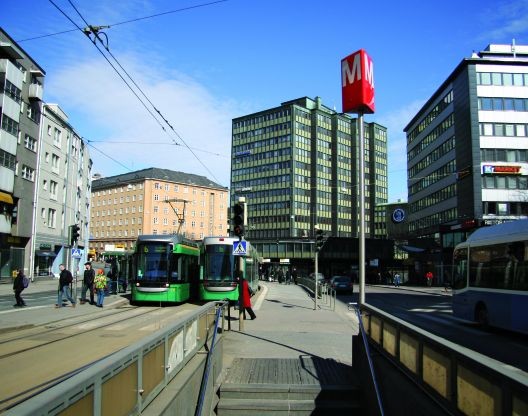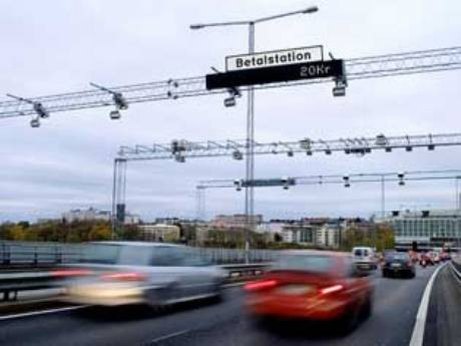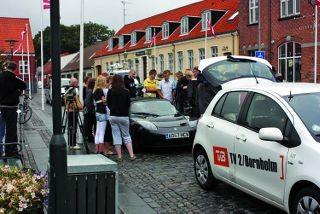This article presents the cases from that study, arguing that the set of toolkits in general seem to be useful in tracking the Nordic urban and regional response to climate change.
The tested toolkits are:
1. Spatial planning – governance - of the toolkits outlined below
2. Changes in attitudes and behaviour
3. Investments which facilitate acting in climate friendly ways
4. Economic incentives
5. Changes in legislation
6. Physical and transport planning
Spatial planning as the main toolkit
The main toolkit is Spatial planning and governance. Spatial planning concerns the creation of strategies which seek to enhance the synergies between the above-mentioned toolkits on the local, regional and national levels. It is also about finding ways to prioritise the reduction of greenhouse gas emissions in a wider sustainable development context such as climate change adaptation.
One such example is the discussion of the compact city. Creating the compact city is often used as an argument to help reduce greenhouse gas emissions, for instance, in the need for greater public transport capacity and the promotion of walking and cycling.
Whether or not it is a good strategy its relation to the issue of climate change adaptation is crucial. A compact city demands great efforts be made when it comes to climate change emergencies such as flooding and heavy rain.
A compact city also implies warmer surfaces which may however become increasingly unusable as global warming continues. Compact cities therefore need well planned green areas.
This is simply to highlight the fact that climate change mitigation and other dimensions of sustainability such as climate change adaptation cannot be seen as separate issues. The ways in which synergies between adaptation and mitigation can be found are being developed using the concept of “Adaptigation” (Langlais & Dymén, 2009). The concept is intended to signal that unexpected results can emerge in developing our strategies.
Furthermore, the discussion of reducing greenhouse gas emissions in a wider sustainable development context forces planners to considerate the issues of time, space and stakeholders.
Stockholm – congestion tolls and sustainable transport
Stockholm provides an example of the need to adopt a multi-faceted approach to achieving sustainable transport goals in a Nordic metropolitan area given the long-term problems with congestion which are viewed, not only as a threat to the environment, but also as a threat to the economic growth capacity of the region and to the country as a whole. We can observe the role of Spatial Planning here as the main toolkit in addressing the economic, social and environmental dimensions of sustainability in an attempt to understand the consequences of congestion.
The two main measures addressed in this section are promotion of the use of clean vehicles and the introduction of congestion charges. The first measure, enhancing the use of clean vehicles, was introduced by the City of Stockholm in 2005. The goal here is primarily to influence the air quality while also reducing greenhouse gas emissions and noise.
An additional goal is that all vehicles should use at least 50% of their fuel from renewable energy sources. This shows that there is an ambition here to address the social, economic and environmental aspects of sustainability.
Reducing noise and improving air quality has a direct social and economic dimension for certain groups of stakeholders, whereas reducing greenhouse gas emissions is more of an environmental issue in a long term perspective.
The second measure, congestion charges, is a very clear example of the toolkits Economic incentives, Changes in legislation and Investments which facilitate acting in climate-friendly ways. The congestion charges were first tested during a one-year trial period in 2005-2006 together with the provision of increased public transport connections.
The result was that the number of cars in the city centre was reduced by 20-25% (approximately 100 000 cars) and emissions by 14%. The congestion charge system was made permanent in 2008. One journey costs 10-20 SEK with higher charges during rush hour periods. Another perhaps unsuspected result of the congestion charge is the increase in sales of alternatively-fuelled vehicles by about 23 % across Stockholm County during 2008. The major reason for this being that clean vehicles registered before the end of 2008 were exempted from congestion charges. This is a concrete use of the toolkit Economic incentives. This Stockholm city policy increased significantly the sale numbers of alternatively fuelled vehicles. In 2008 sales grew at a record pace. One third of all cars sold in Stockholm were alternatively-fuelled cars.
Helsinki – Sustainable Structure for the Metropolitan Area
The METKA-project (Sustainable Structure for the Metropolitan Area) was carried out during the period 2007-2008 with the aim of creating workable methods for sustainable urban and traffic planning in the Helsinki Metropolitan Area - consisting of Uusimaa Region, Häme Region, Itä-Uusimaa Region, Päijät-Häme Region and Kymenlaakso Region.
The project brought together actors across administrative borders in the area, such as regional councils, route authorities and the environmental administration. The purpose here was to study and discuss the possibilities in respect of finding better methods to control the early phase of strong metropolisation.
To create a model that illustrates a desirable future for the Helsinki Metropolitan Area up to the year 2050, four different scenarios were generated. All describe the possible development of urban centres and the connections between them. These scenarios allocate new urban development according to the accessibility offered by the transport system.
The four regional scenarios were described as: Sprawling “Old Way”; Rail-oriented “Rail Necklace”; Transport arteries-based “Strong Connections”; and Multi-centred “Balanced Centres”. These alternative scenarios were then analysed and compared with the end product resulting in the METKA model. The model aims at the densification of current centres and the rail corridors between them.
To achieve this cooperation between the various actors a number of regulatory measures would be necessary. The project did not focus on the creation of practical decisions or measures to change planning policy but it did undoubtedly increase awareness of the changes required.
One outcome of the process is the growing level of mutual understanding in the regions of basic spatial development principles. It will probably however take several ears before the results are translated into planning practice,
The METKA project in particular demonstrates the use of the toolkits Spatial planning and governance and Physical and transport planning. The social, economic and environmental consequences will influence stakeholders across the regions in the long term through the creation of improved living environments and a lesser impact on climate change.
In the short term, the question remains how should the seemingly inevitable consequences of climate change be dealt with without compromising longer term mitigation activities.
Bornholm – EDISON project
A recent Nordic project designed to increase the potential usage of electric vehicles commenced on the Danish island of Bornholm in February 2009. The project represents an investment by several public and private actors.
The peripheral island with a population of 40 000 people produces a large amount of electricity via wind energy. This was the major reason for choosing the island as a test bed for the project.
The knowledge needed includes - technical, organisational (how to manage the distribution net), economic (how to manage the economic risks at start-up) and environmental factors in respect of how electric cars are used, operated and maintained.
The expected advantages are energy-efficiency savings and reduced greenhouse gas emissions as well as improvements in the urban environment with less noise and harmful emissions from cars. The effects of such a policy approach on spatial structures are potentially numerous.
The EDISON project is narrower in scope compared to the examples outlined for Stockholm and Helsinki above. The case deals mostly with the toolkits Spatial planning and governance; Investments that facilitate acting in climate-friendly ways and Economic incentives. The expected results from the project demonstrate significant benefits when it comes to the social, economic and environmental dimensions of sustainability.
The environmental benefits relate to reduced greenhouse gas emissions on a long term basis. Higher energy efficiency is primarily a short term result, highlighting the economic dimension of sustainability. The social dimension relates to improved urban environments as well as to less noise and less harmful emission levels from cars.

Helsinki with metro entrance. Photo Odd Iglebaek

Cogestion tolls in Stockholm. Photo: www.sweden.se

Modern electric vehicles at Bornholm. Photo: www.oestkraft.dk